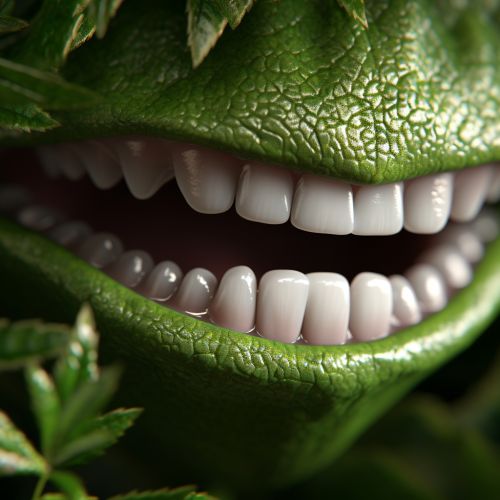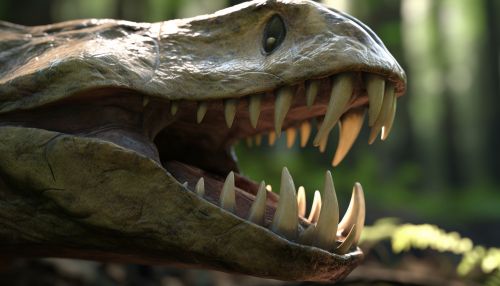Herbivore
Definition and Overview
A herbivore is an animal that gets its energy from eating plants, and only plants. Unlike carnivores, which consume flesh, herbivores can be classified into frugivores (fruit-eaters), granivores (seed eaters), nectarivores (nectar feeders), and folivores (leaf eaters). Herbivores are a major part of the food chain, a sequence of organisms that eat each other and get eaten, in the ecological system. They are often preyed upon by carnivores and omnivores.
Anatomy and Physiology
Herbivores have evolved specialized physical features that aid in the digestion of plant material. These adaptations are reflected in their dental and digestive systems.


Dental Structure
Herbivores have teeth that are adapted to grind plant material, a process that is necessary to break down the complex carbohydrates found in vegetation. The most specialized herbivores, such as cows and horses, have a dental feature called a dental pad instead of upper front teeth. They have large and flat molars and premolars for grinding, and their incisors are adapted for biting off plant material.
Digestive System
The digestive systems of herbivores are uniquely suited to break down plant material for absorption. The digestion of cellulose, a complex carbohydrate found in plant cell walls, is a significant challenge for herbivores. Some herbivores, like cows and other ruminants, have a specialized stomach with four compartments to assist in the fermentation and breakdown of cellulose. Other herbivores, like horses and rabbits, utilize a process called hindgut fermentation, where cellulose is broken down in their hindgut by microbial action.
Classification
Herbivores can be classified based on their feeding habits. Some of the major types of herbivores include:
Frugivores
Frugivores primarily eat fruits. This group includes animals like some bats, birds, and primates.
Granivores
Granivores primarily eat seeds. This group includes animals like some rodents and birds.
Nectarivores
Nectarivores primarily eat nectar from flowers. This group includes animals like hummingbirds and bees.
Folivores
Folivores primarily eat leaves. This group includes animals like koalas and caterpillars.
Role in the Ecosystem
Herbivores play a crucial role in the ecosystem by controlling plant populations, cycling nutrients, and providing a food source for predators. They also contribute to seed dispersal, which aids in plant reproduction.
Evolution
The evolution of herbivory was a significant development in the history of life on Earth. The first herbivores evolved around 300 million years ago during the late Carboniferous period. The evolution of herbivory led to significant changes in plant and animal life and the Earth's environment.
